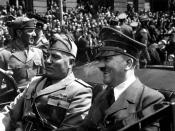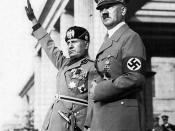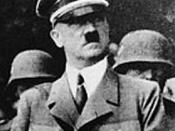Adolf Hitler and Josef Stalin came to power in post-World War One Europe on platforms meant to unite their nations on common ideals. The National Socialist Party (Nazi Party) argued against democracy and liberalism and espoused nationalistic claims of German superiority. Soviet Communism emphasized an overthrow of capitalism through a workers' revolution and the establishment of a system in which property is owned by the community as a whole rather than by individuals. Although Nazism and communism were quite different ideologically, Nazi Fascism and Soviet Communism were similar based on the styles in which they were practiced by Adolf Hitler and Josef Stalin, respectively.
Both Hitler and Stalin used fear as a means to gain a full run of their respective governments. Stalin was already dictator of Russia with his power and loyalty of the people guaranteed by the secret police, the Cheka. This entity provided Stalin with an easy means of destroying the opposition and weeding out undesirables to be sent to prison camps in Siberia called Gulags, a virtual death sentence.
For Hitler to ascend to that level of power, he rammed the Enabling Act through the German Congress which gave him the power to enact laws. Under his new power, Hitler decreed that the only legal party was the National Socialist Party, suppressing all opposition parties. Likewise, Stalin turned the Soviet Union into a one-party dictatorship based on total state control of the economy and the suppression of any form of opposition. Hitler also declared that all association of, collaboration with, and support of other parties would result in imprisonment in camps similar to Russia's labor camps. Like Stalin, Hitler used a form of secret police called the Gestapo to enforce his policies. Political prisoners, homosexuals, Jews, and other enemies of Germany were sent to...


